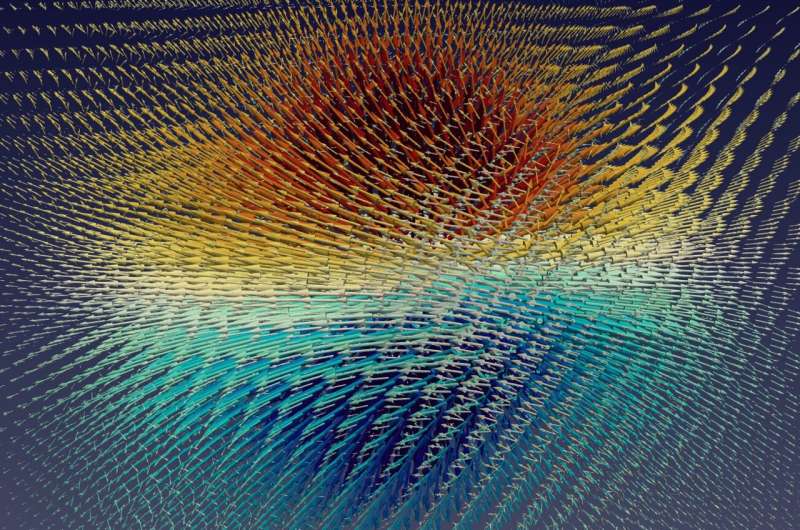
Metal-halide perovskites have quickly advanced in the last decade since their discovery as a semiconductor that outshines silicon in its conversion of light into electric current.
Simulations on TACC's Frontera and Lonestar6 supercomputers have revealed surprising vortex structures in quasiparticles of electrons and atoms, called polarons, which contribute to generating electricity from sunlight.
This new discovery can help scientists develop new solar cells and LED lighting. This type of lighting is hailed as eco-friendly, sustainable technology that can reshape the future of illumination.
"We found that electrons form localized, narrow wave packets, which are known as polarons. These 'lumps of charge'—the quasiparticle polarons—endow perovskites with peculiar properties," said Feliciano Giustino, professor of Physics and W. A. 'Tex' Moncrief, Jr. Chair of Quantum Materials Engineering at the College of Natural Sciences and core faculty at the Oden Institute for Computational Engineering and Sciences (Oden Institute) at UT Austin.
Giustino is a co-author of research on polarons discovered in halide perovskites published March 2024 in the Proceedings of the National Academy of Sciences.
"These polarons show very intriguing patterns. The atoms rotate around the electron and form vortices that had never been observed before," said Giustino, who also is the director of the Center for Quantum Materials Engineering at the Oden Institute.
The vortex structures of polarons may help the electrons remain in an excited state, which happens when a photon of light knocks into the compounds at the atomic level.
"We suspect that this strange vortex structure prevents the electron from going back to the unexcited energy level," Giustino explained. "This vortex is a protected topological structure in the halide perovskite lattice material that remains in place for a long time and allows the electrons to flow without losing energy."
Perovskite structures are a type of material known for over a century when Gustav Rose discovered the calcium titanium oxide perovskite CaTiO3 in 1839. More recently, in 2012 Giustino was working with the group of Oxford University scientist Henry Snaith who discovered a new type of perovskite called halide perovskites—where instead of oxygen there are halogens, elements that form salts when they react with metals.
"It turns out that halide perovskites in solar cells show exceptional energy conversion efficiency," Giustino said.
In comparison, the top efficiency in silicon is about 25 percent, meaning that out of all the energy coming from the sun, one quarter is converted to electricity. To reach 25 percent efficiency, silicon took about 70 years of development. Halide perovskites, on the other hand, managed to reach 25 percent efficiency within just 10 years.
"This is a revolutionary material," Giustino said. "That explains why many research groups working on photovoltaics have moved to perovskites, because they are very promising. Our contribution looked at the fundamentals using computational methods to delve into the properties of these compounds at the level of individual atoms."
More information: Jon Lafuente-Bartolome et al, Topological polarons in halide perovskites, Proceedings of the National Academy of Sciences (2024). DOI: 10.1073/pnas.2318151121
Citation: Surprising vortex behind new solar cell and lighting materials (2024, June 26) retrieved 26 June 2024 from https://techxplore.com/news/2024-06-vortex-solar-cell-materials.html
This document is subject to copyright. Apart from any fair dealing for the purpose of private study or research, no part may be reproduced without the written permission. The content is provided for information purposes only.
